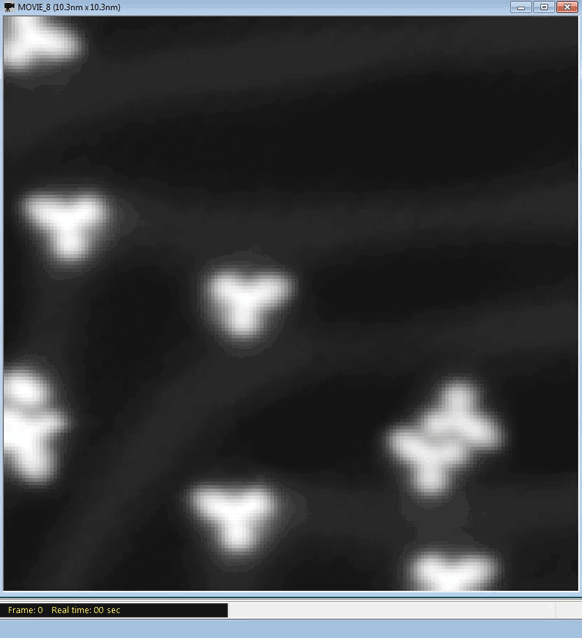In fact, there was a tie although it seems the Swiss winners were a little more excited. A May 1, 2017 news item on swissinfo.ch provides fascinating detail,
“Swiss Nano Dragster”, driven by scientists from Basel, has won the first international car race involving molecular machines. The race involved four nano cars zipping round a pure gold racetrack measuring 100 nanometres – or one ten-thousandth of a millimetre.
The two Swiss pilots, Rémy Pawlak and Tobias Meier from the Swiss Nanoscience Institute and the Department of Physicsexternal link at the University of Basel, had to reach the chequered flag – negotiating two curves en route – within 38 hours. [emphasis mine*]
The winning drivers, who actually shared first place with a US-Austrian team, were not sitting behind a steering wheel but in front of a computer. They used this to propel their single-molecule vehicle with a small electric shock from a scanning tunnelling microscope.
During such a race, a tunnelling current flows between the tip of the microscope and the molecule, with the size of the current depending on the distance between molecule and tip. If the current is high enough, the molecule starts to move and can be steered over the racetrack, a bit like a hovercraft.
….
The race track was maintained at a very low temperature (-268 degrees Celsius) so that the molecules didn’t move without the current.
What’s more, any nudging of the molecule by the microscope tip would have led to disqualification.
Miniature motors
The race, held in Toulouse, France, and organised by the National Centre for Scientific Research (CNRS), was originally going to be held in October 2016, but problems with some cars resulted in a slight delay. In the end, organisers selected four of nine applicants since there were only four racetracks.
The cars measured between one and three nanometres – about 30,000 times smaller than a human hair. The Swiss Nano Dragster is, in technical language, a 4′-(4-Tolyl)-2,2′:6′,2”-terpyridine molecule.
The Swiss and US-Austrian teams outraced rivals from the US and Germany.
The race is not just a bit of fun for scientists. The researchers hope to gain insights into how molecules move.
I believe this Basel University .gif is from the race,
*Emphasis added on May 9, 2017 at 12:26 pm PT. See my May 9, 2017 posting: Nanocar Race winners: The US-Austrian team for the other half of this story.
